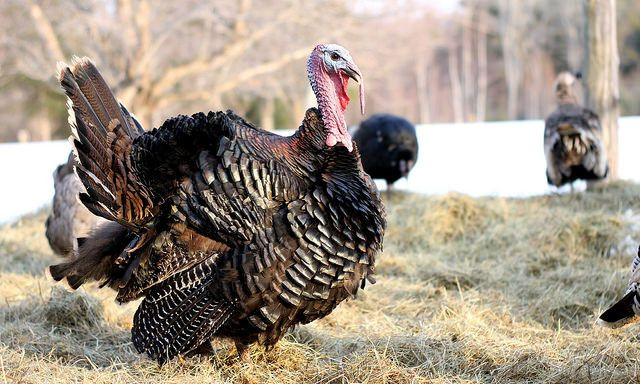Bird Flu Strikes At Least Ten Turkey Farms In Indiana, But Cases Not Tied To 2015 Outbreak

Bird flu has reemerged in Indiana, though under a different moniker than the subtype that devastated poultry farms and wild birds in 2015.
On Jan. 15, the Indiana State Board of Animal Health, in conjunction with the United States Department of Agriculture, announced the discovery of highly pathogenic avian influenza (HPAI) in a turkey farm in Dubois County. By Saturday, the tally expanded to nine other turkey farms nearby. All the flocks, however, have been infected by the H7N8 flu strain, rather than the H5N2 virus that spread across 21 states last spring and led to the culling of 48 million domestic birds, mostly chickens, and a net economic loss of $3.3 billion.
"This finding of highly pathogenic H7N8 is unique to Indiana and the nation," said Indiana State Veterinarian Dr. Bret D. Marsh in a statement released Friday. "This strain is unrelated to those identified in the Upper Midwest in 2015, nor is it related to the HPAI case identified in a Northeastern Indiana backyard poultry flock that was affected last May."
Though the H5 subtype of HPAI has been shown to infect humans who maintain close sustained contact with infected birds, there are no recorded cases of human transmission when it comes to H7N8. According to health officials, avian influenza, no matter what the strain, poses no danger to our current food supply. The same can't be said for the birds themselves, with the discovery of the outbreak coming about after several hundred birds were found dead. As per standard procedure, affected flocks will be eliminated, regardless of their infection status. This measure will ultimately leave about 240,900 turkeys dead. This measure will ultimately leave about 240,900 turkeys dead.
At this point, it isn't known how H7N8 ended up in Indiana, though it's possible it may have been originated among wild birds staying in the state for the winter. Thankfully, it appears that only one of the farms contained a HPAI version of the virus, with the rest harboring a low pathogenic avian influenza (LPAI) that spreads less easily and often leaves behind little symptoms.
"It appears that there was a low pathogenic virus circulating in the poultry population in this area, and that virus likely mutated into a highly pathogenic virus in one flock," said Dr. John Clifford, USDA Chief Veterinarian. "Through cooperative industry, state and federal efforts, we were able to quickly identify and isolate the highly pathogenic case, and depopulate that flock. Together, we are also working to stop further spread of the LPAI virus, and will continue aggressive testing on additional premises within the expanded control area to ensure any additional cases of either HPAI or LPAI are identified and controlled quickly."
The incident does, however, mark the first recorded instance of HPAI H7N8 found in North America.
Published by Medicaldaily.com



























